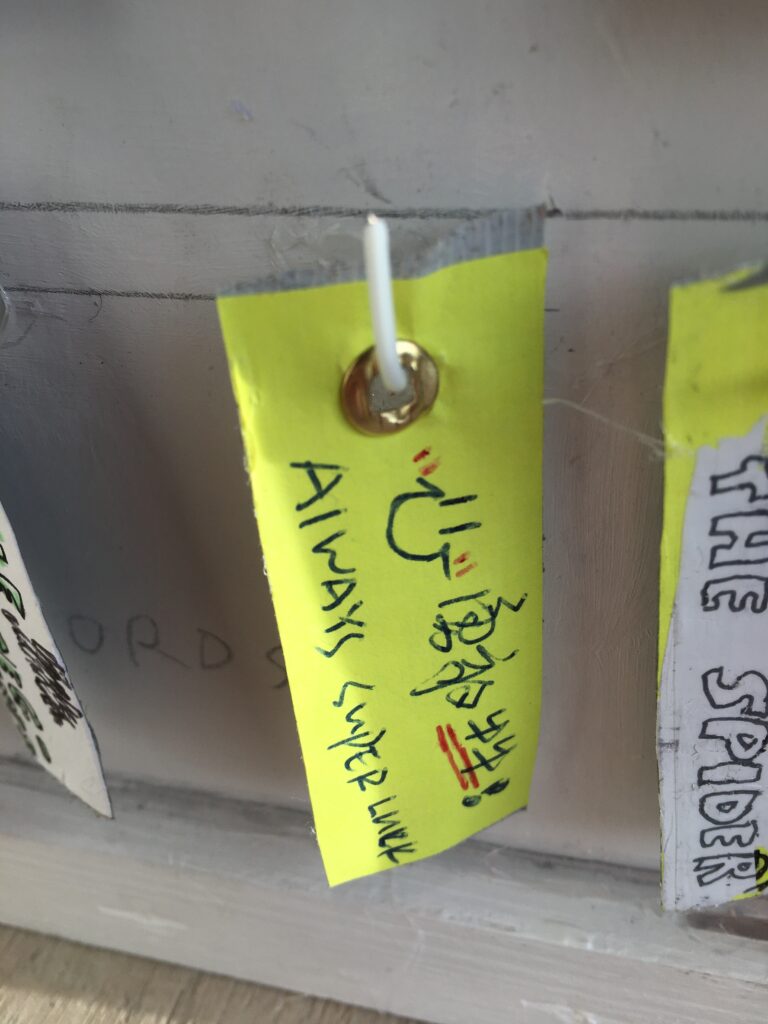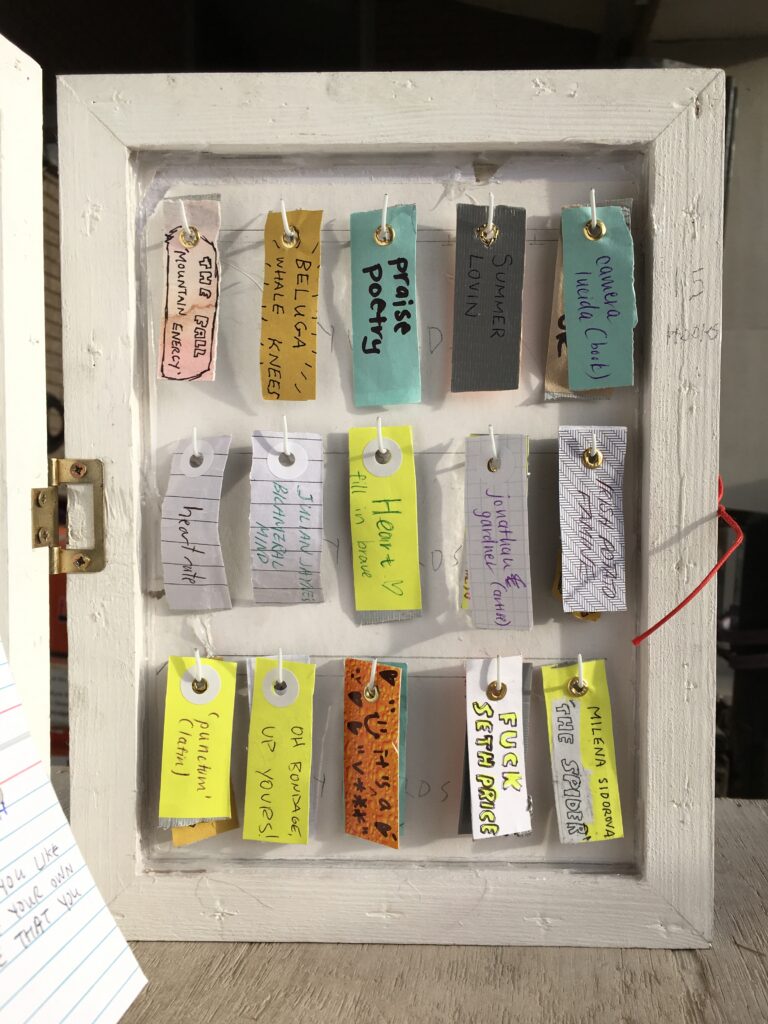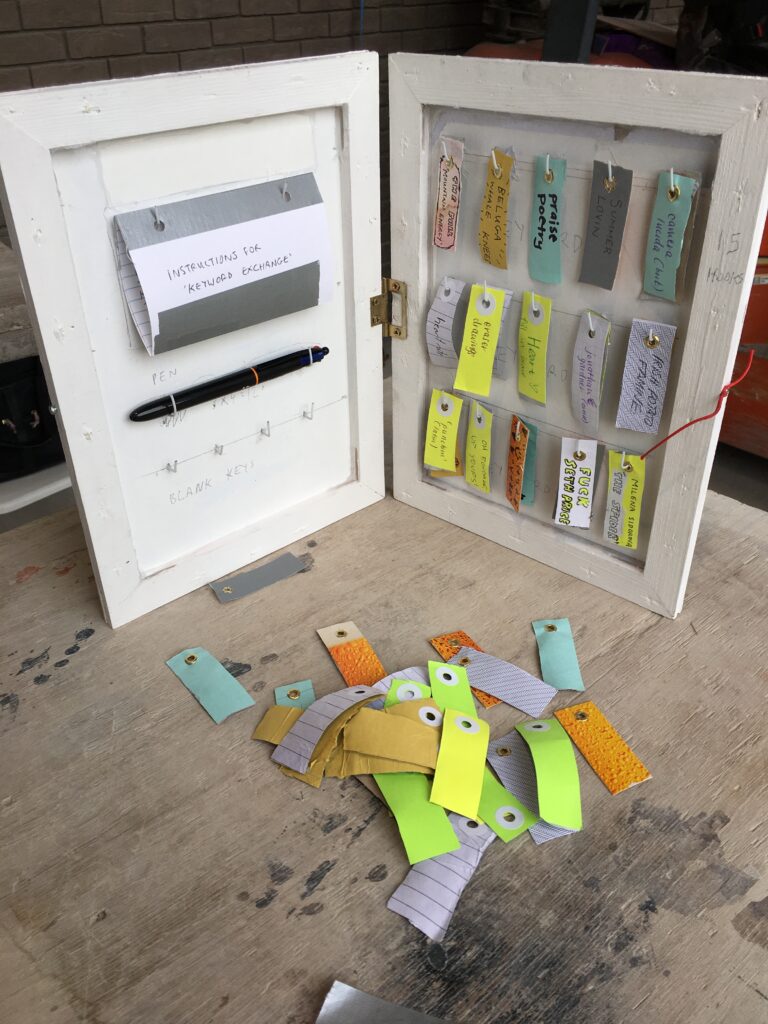This post comprises my own review and reflection on the “Keywords” tool/kit and workshop as it was ran during the MaCAT / ESW Contemporary Art and Open Learning Fair.
Following a quick “dress rehearsal” of my tool/kit with a fellow CAT student, I reset the installation ready for my first group of participants. By this point I had decided that I would try to “automate” my tool/kit – that is, have it run without me necessarily being present and / or guiding the participants. I facilitated this by writing out a series of instructions and including them as part of the overall installation.
The first group arrived as scheduled, and was significantly larger than anticipated – around 7-10 participants, rather than the expected 4-5. This caused some minor issues, as not all the participants were able to get close enough to the installation to read the instructions and access the materials, however the group got around this by having one volunteer read the instructions aloud.
Next, the participants took turns to choose blank keys and pens / pencils, and began to generate ideas for their keywords. Some participants seemed to find this easier than others, and there was a mixture of rapid-fire contribution and thoughtful contemplation of the instructions. Although my intention was to “automate” the tool/kit, I was approached for clarification a number of times and on these occasions I did offer my guidance – though I tried to remain vague as to the specific nature of a “keyword” so as not to influence their interpretation too much.
Due to their different approaches to contribution, some participants finished the workshop before others; at this point the parameters of the given 15-minute time slot began to drift slightly, as participants started to drift in and out of the workshop – reading the instructions, browsing the keywords and perhaps making a contribution of their own; others took photos, asked questions, or mulled over the tool/kit before going elsewhere. The tool/kit remained open and “automated” in this way for the remainder of the Open Learning fair.
I periodically checked the installation during the fair, and noticed that a number of new contributions had been made to the keyword cabinet each time I looked. While I did not have time to read all of the new keywords during the fair itself, I did notice that new words had been added and subsequently removed or exchanged before I’d had a chance to read them; this to me shows that the tool/kit functioned well in its “automated” state, as participants were clearly using the tool/kit as intended, without any additional instruction from myself.
The pictures below show the range of keywords that were left behind at the end of the session. Given that many of the new keywords are unknown to myself (and thus represent potential “keys” or starting points for new research), the tool/kit / workshop appears to have worked successfully as a kind of improvised and unpredictable knowledge exchange.
I will add my reflection on the rest of the Open Learning fair in my next post.





